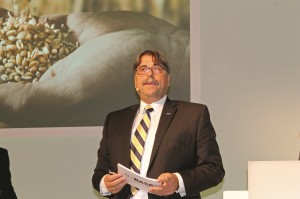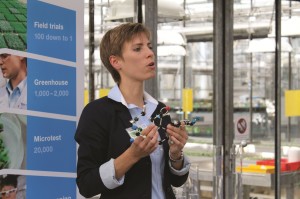BASF Reaffirms Its Commitment To Ag
Most observers would agree that these are interesting times to be involved in the agricultural market. Since the market crash of mid-2008, commodity prices have remained high and growers and their suppliers have largely been the beneficiaries of this growth.
Markus Heldt, president of the Crop Protection Division for BASF, pointed this out at the company’s recent Press Tour in Limburgerhof, Germany. “We’ve seen a lot of change in the ag chemicals industry over the past 30 years,” said Heldt. “But the most exciting times have occurred over the past three to four years.”
In particular, Heldt indicated that the increasing number of weeds showing some form of resistance to herbicides around the globe has been one of the key drivers of how the crop protection marketplace is re-shaping itself. “Let’s face it — many of the herbicide programs growers have used over the past 35 years are not working any longer,” he said. “And this situation will likely gets worse before it gets better. Weed resistance will change the entire market for farmers everywhere.”
Despite these difficulties, Heldt said BASF’s commitment to crop protection innovation remains unchanged. “The backbone of our business, today and into the future, is crop protection,” he said. “This success stems from our commitment to providing innovations that address the importance of having sufficient and high quality food for a growing population. We continue to expand our portfolio, far and beyond crop protection products, to deliver integrated technologies that can help growers run their business more efficiently.”
To support this level of growth, BASF plans to invest more than $2.4 billion to build and upgrade production and formulation capabilities over the next five years, approximately doubling the company’s current investment level. This figure covers plans to expand production capabilities for the company’s fungicides F500 and Xemium in Germany and herbicides dicamba and Kixor, which are produced for the U.S. market. Overall, added Heldt, Crop Protection Division sales are projected to surpass $10.9 billion by 2020.
Integrating Functional Crop Care
One of the other topics of discussion at the BASF Press Tour concerned the company’s newly established Functional Crop Care global unit, which includes the complete integration of U.S.-based Becker Underwood. “With BASF’s research capabilities and innovative product portfolio, Functional Crop Care is uniquely set up to harness the progress achieved through our interdisciplinary chemistry and biology research,” said Jürgen Huff, senior vice president, Functional Crop Care. “This will help us to unlock agricultural potential in new areas such as soil management, where we look for products to enhance water and nutrient management in the soil.
One of the first such projects in this endeavor is LIMUS. According to Huff, LIMUS is a technology using soil organisms that can help stem the amount of applied nitrogen lost to the plants through evaporation into the air. “Nitrogen is responsible for sustaining approximately 45% of the world’s population,” he said. “Unfortunately, approximately 50% of the applied nitrogen ends up getting lost in the air and is not available for the plant to capture.”
But by using LIMUS, said Huff, users will be able to significantly reduce this rate of degradation, allowing the plants to utilize more of the nitrogen being applied to the soil. “Right now, we are still field testing LIMUS, but we hope to have it ready for the market by the middle of the next decade,” he said.








